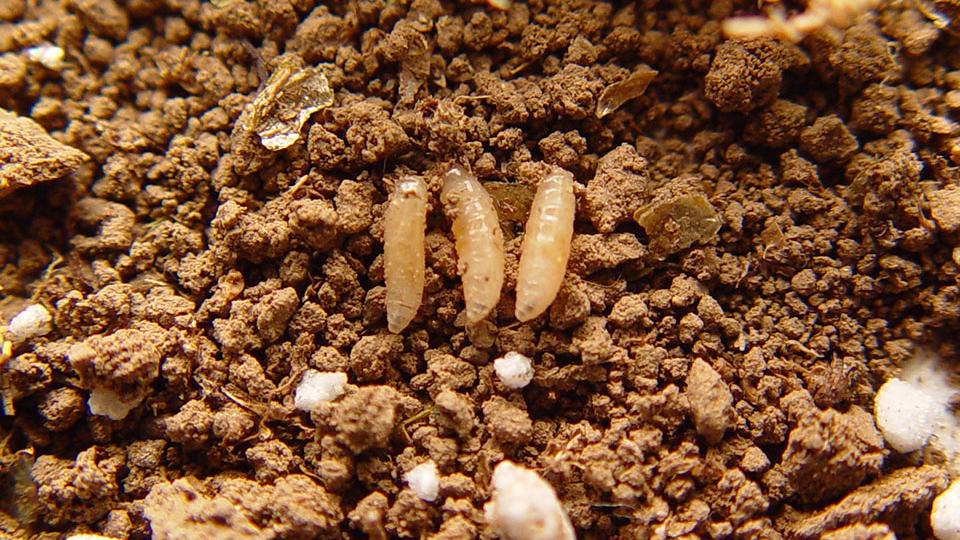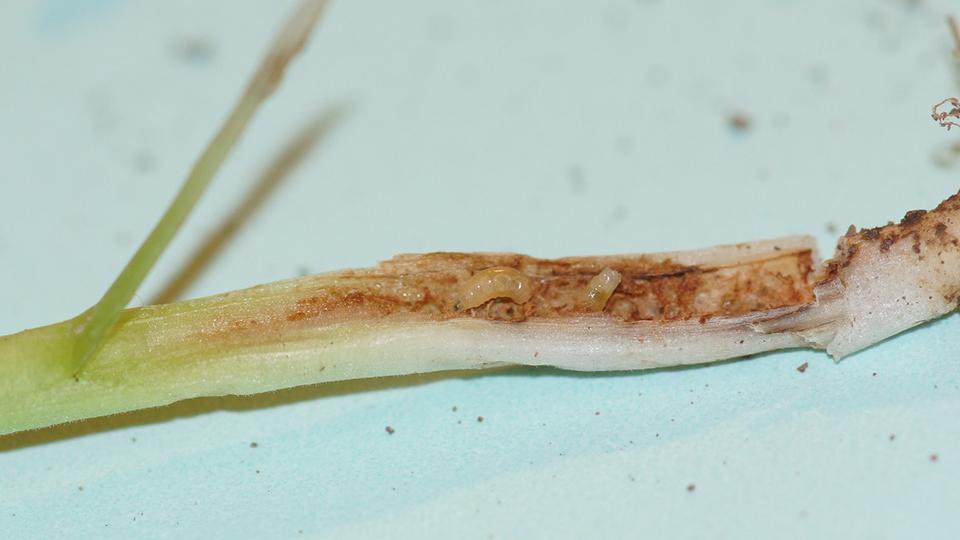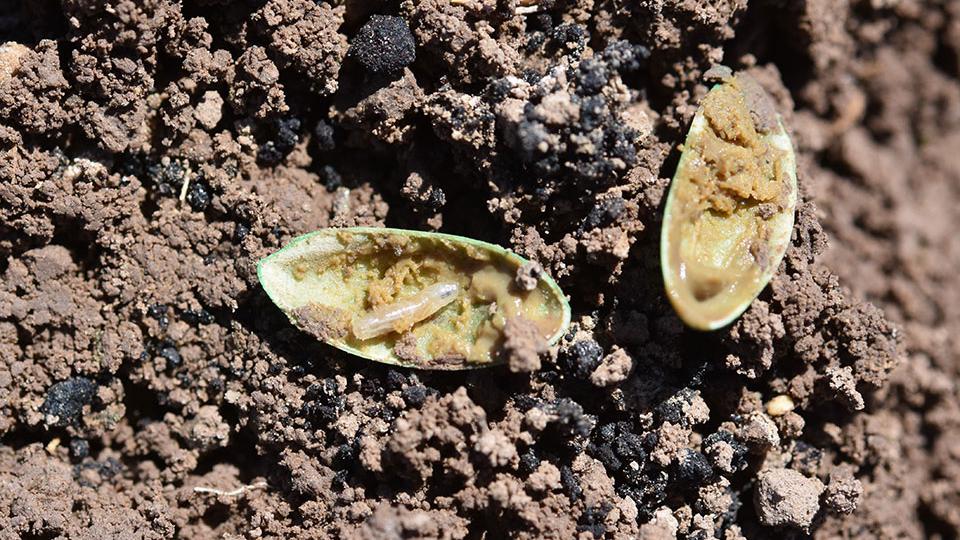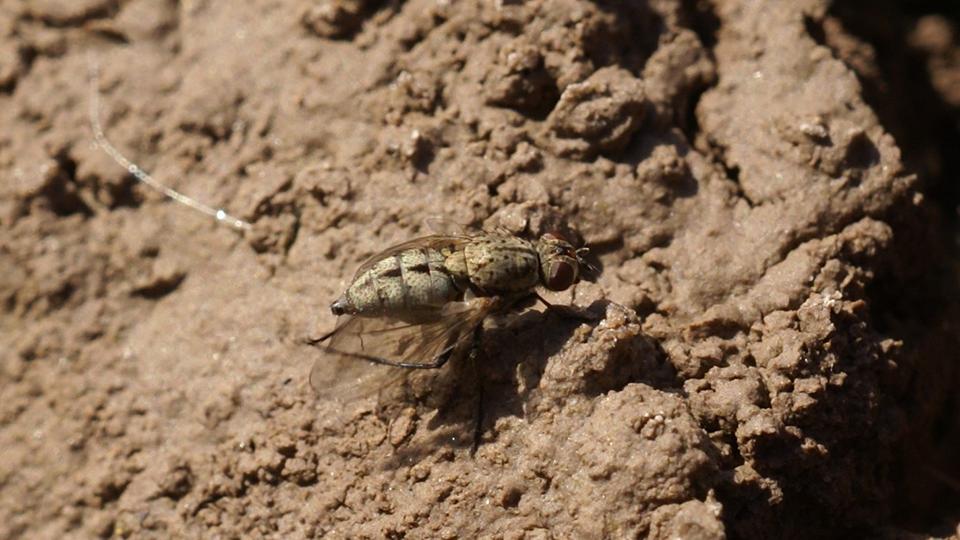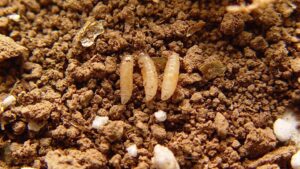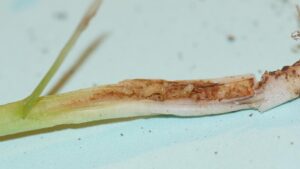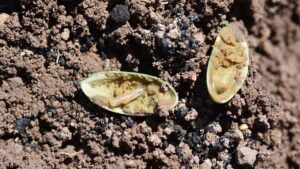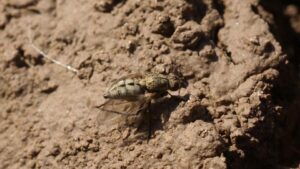Did You Know? Seedcorn Maggots Can Devastate Spring Melons
Seedcorn maggot, Delia platura, an annual insect pest on spring melons in the desert Southwest, should be avoided whenever possible.
They can cause significant stand reductions in melons and other large-seeded crops due to feeding damage on germinating seed, as well as roots or stems of seedlings and transplants.
Scouting Tips
The seedcorn maggot is a pale, yellowish-white legless larva that can reach a length of 6 mm at maturity. Maggots may overwinter as larvae in the soil or hatch from eggs laid in the spring.
The adult is a grayish brown fly with a dark, mid-dorsal stripe on the abdomen and resemble a small housefly. The flies are most abundant in the early spring following disking of winter lettuce and brassica crops.
Adult flies readily lay eggs in temperatures ranging from 50°F to 80°F. The eggs are usually placed at the soil surface, singly or in a cluster of up to 10.
Adults prefer to oviposit in fields containing germinating seeds, decaying plant residue from a previous crop, and organic fertilizers and composted manure. They also prefer moist, freshly turned soil for egg laying and will often avoid laying eggs in dry soils.
Emerging maggots will develop at soil temperatures as low as 50°F, but optimal growth occurs at around 70°F where immature development can occur in less than 10 days. Once maggots complete development, they pupate in the soil. They usually have three to four generations per year, but only the first is usually economically significant in desert melons.
The maggots attack germinating seeds or transplants in the early spring when the soil is cool. Damage occurs from maggots feeding on seeds and developing embryos during germination. The maggots bore into seeds as the seed coat splits, or feed on the emerging hypocotyl of developing plant.
Emerged seedlings infested with maggots can wilt and die within a few days. Watermelon transplants are also susceptible to maggots where they move from root plug into the stem.
Conditions Ideal for Seedcorn Maggots
Melon stands are particularly susceptible to maggots during wet, cool spring weather in which seed germination is slowed or delayed. These conditions (low soil temperatures, rainfall and/or excessive irrigation) allow maggots to rapidly infest the soil and attack the seeds before they can emerge. Cool weather definitely favors the seed corn maggot.
Warm and dry weather reduces the threat of maggot damage as seedlings emerge before maggots can hatch and cause damage to the seed.
Melon crops following leafy vegetable crops are most often attacked because seedcorn maggot adults are attracted to freshly tilled soils with high levels of decomposing organic matter and will readily lay eggs in the moist soil. This includes heavy plant residue remaining after harvest of the previous lettuce or brassica crop, as well as applications of composted manure prior to planting.
You will want to delay planting melons into fields under these conditions until the residue has had time to decompose. The flies can also be attracted to the commercially prepared growing medium used to start melon transplants in the nursery.
Managing the Pest
When seedcorn maggots are found infesting newly planted spring melon fields, it is too late to control them. Thus, avoiding the problem is the most effective way of preventing stand reductions.
Effective control can only be accomplished with preventative cultural practices and/or prophylactic insecticide applications.
The first line of defense against seedcorn maggot is cultural practices.
Fields with heavy-textured soil usually experience the worst problems with maggots because the soil tends to remain wet for longer periods. These should be avoided when practical.
You’ll want to avoid direct seeding or transplanting melons into recently harvested fields with decomposing beets and brassica crops. Similarly, lettuce and spinach fields that were lightly harvested can also be problematic due to the abundance of decomposing plant residue.
Incorporating crop residues by disking or plowing well in advance of melon planting (four to five weeks) helps reduce a field’s attractiveness to ovipositing flies. This also applies to organic fertilizers and composted manures.
Preventative insecticide applications can provide effective control when growing conditions are ideal for maggot infestation.
Bifenthrin applied as an in-furrow spray during planting consistently shows good levels of maggot control. Applying clothianidin, spinosad, chlorantraniliprole, and cyantraniliprole in furrow have shown inconsistent maggot control in the desert.
Unfortunately, standard neonicotinioid (imidacloprid, thiamethoxam) applications below the seed for aphid and whitefly control will not prevent maggot damage. However, neonicotinoid seed treatments have been shown to provide better control of maggots in melons than the soil applied counterparts.





